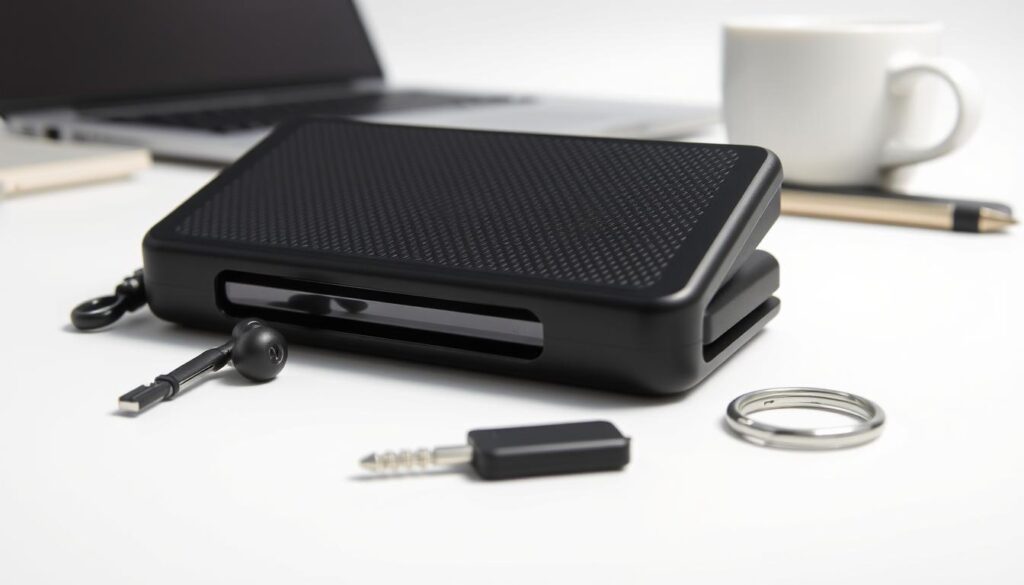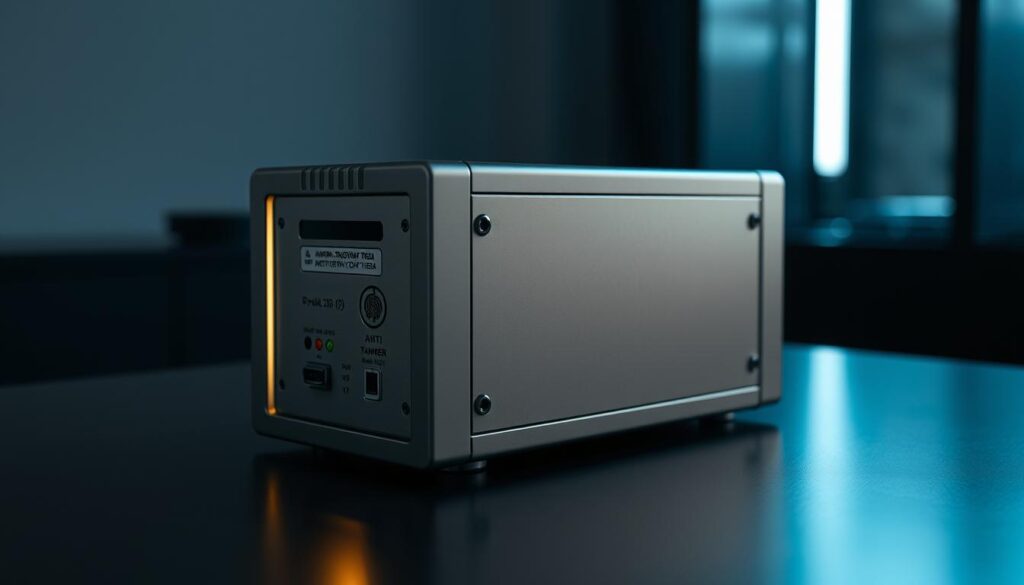Now Reading: Understanding Crypto Wallets: Hot vs. Cold Storage
- 01
Understanding Crypto Wallets: Hot vs. Cold Storage
Understanding Crypto Wallets: Hot vs. Cold Storage

Crypto wallets are a crucial aspect of the cryptocurrency ecosystem, and understanding the differences between hot and cold storage is essential for anyone looking to invest in digital assets. The concept of crypto wallets hot vs cold storage is often debated, with each type of storage having its own set of advantages and disadvantages. When it comes to crypto wallets hot vs cold storage, the main difference lies in the level of security and accessibility they offer.
The differences between hot and cold storage are significant, and it’s essential to comprehend these differences to make informed decisions about crypto wallets hot vs cold storage. Hot storage solutions are connected to the internet, making them more vulnerable to hacking and cyber attacks, whereas cold storage solutions are offline, providing an additional layer of security.
In the following sections, we will delve into the world of crypto wallets, exploring the fundamentals, security features, and practical considerations of both hot and cold storage solutions, including the differences between hot and cold storage. By understanding the concept of crypto wallets hot vs cold storage, individuals can make informed decisions about their cryptocurrency investments and ensure the security and integrity of their digital assets.
The Fundamentals of Crypto Storage
Crypto storage is a critical aspect of the cryptocurrency ecosystem, and understanding its fundamentals is essential for anyone looking to invest or use digital currencies. The benefits of cold storage for crypto wallets are numerous, including enhanced security and protection against hacking and theft. Proper storage is crucial to ensure the importance of secure storage for cryptocurrencies is maintained.
A crypto wallet is essentially a software program that allows users to store, send, and receive digital currencies. There are several types of crypto wallets, each with its own unique features and benefits. The importance of secure storage for cryptocurrencies cannot be overstated, as it helps to protect against unauthorized access and theft.
What is a Crypto Wallet?
A crypto wallet is a digital wallet that allows users to store, send, and receive cryptocurrencies. It is essentially a software program that interacts with the blockchain, enabling users to manage their digital assets. The benefits of cold storage for crypto wallets include enhanced security and protection against hacking and theft.
Why Proper Storage Matters
Proper storage is crucial to ensure the security and integrity of cryptocurrencies. The importance of secure storage for cryptocurrencies is evident in the numerous cases of hacking and theft that have occurred due to inadequate storage. By using cold storage for crypto wallets, users can significantly reduce the risk of unauthorized access and theft.
Key Storage Components
There are several key storage components that are essential for secure crypto storage. These include:
- Private keys: These are used to access and manage digital assets.
- Public keys: These are used to receive cryptocurrencies.
- Seed phrases: These are used to restore access to digital assets in case of loss or theft.
Breaking Down Hot Wallets
Hot wallets are a type of cryptocurrency storage solution that offers ease of use and accessibility. When it comes to hot wallet security, it is essential to consider the potential risks and benefits. In a hot vs cold wallet comparison, hot wallets are often preferred for their convenience and ease of use.
Some of the key advantages of hot wallets include their ability to facilitate quick transactions and their user-friendly interface. However, they also pose a higher risk of security breaches due to their online nature. To mitigate this risk, it is crucial to implement robust hot wallet security measures, such as two-factor authentication and encryption.
In a hot vs cold wallet comparison, it is clear that each type of wallet has its unique characteristics. While hot wallets offer ease of use and accessibility, cold wallets provide an additional layer of security. Ultimately, the choice between a hot wallet and a cold wallet depends on the individual’s specific needs and preferences.
Some popular hot wallet options include online wallets and mobile wallets. These wallets are designed to be user-friendly and accessible, making it easy to manage and transfer cryptocurrencies. By understanding the benefits and risks of hot wallets, individuals can make informed decisions about their cryptocurrency storage needs and choose the best option for their situation.
Cold Storage Solutions Explained
Cold storage solutions offer robust cold wallet security measures to protect digital assets from various threats. These solutions are designed to provide secure storage for cryptocurrencies, ensuring that private keys are not exposed to the internet. By using secure storage solutions for digital assets, users can mitigate the risk of theft and cyber attacks.
Some popular cold storage solutions include hardware wallets, paper wallets, and air-gapped computers. These solutions provide an additional layer of security, making it difficult for hackers to access the stored assets. For example, hardware wallets use advanced encryption and are designed to be highly secure, making them a popular choice for storing large amounts of cryptocurrency.

Benefits of Cold Storage
The benefits of using cold storage solutions include increased security, reduced risk of theft, and peace of mind. By storing digital assets in a secure, offline environment, users can protect their investments from potential threats. Additionally, cold storage solutions can provide a high level of control over the stored assets, allowing users to manage their portfolios effectively.
Overall, cold storage solutions are an essential component of any cryptocurrency investment strategy. By providing robust cold wallet security measures and secure storage solutions for digital assets, these solutions can help users protect their investments and achieve their financial goals.
Crypto Wallets: Hot vs. Cold Storage Comparison
When it comes to storing cryptocurrency, investors have two primary options: hot and cold storage. A hot vs cold wallet comparison is essential to understand the pros and cons of each. Hot storage refers to wallets that are connected to the internet, such as desktop or mobile wallets, while cold storage refers to offline wallets, like hardware or paper wallets.
To choose between hot and cold storage for crypto wallets, investors should consider their individual needs and risk tolerance. Security is a crucial factor, as hot wallets are more vulnerable to hacking and cyber attacks. On the other hand, cold wallets are more secure but may be less convenient for frequent transactions.
The following table summarizes the key differences between hot and cold storage:
| Storage Type | Security | Convenience |
|---|---|---|
| Hot Storage | Lower | Higher |
| Cold Storage | Higher | Lower |
Ultimately, the decision between hot and cold storage depends on the investor’s priorities. By understanding the pros and cons of each option, investors can make an informed decision and choose the best storage solution for their cryptocurrency assets.
Security Features of Hot Wallets
Hot wallets are designed to provide users with easy access to their cryptocurrencies, but this convenience comes with some security risks. To mitigate these risks, hot wallets often include various security features, such as two-factor authentication, multi-signature support, and backup options. These features can enhance hot wallet security and provide users with an additional layer of protection.
Two-Factor Authentication
Two-factor authentication requires users to provide a second form of verification, such as a code sent to their phone or a biometric scan, in addition to their password. This adds an extra layer of security, making it more difficult for hackers to gain access to the wallet.
Multi-Signature Support
Multi-signature support allows multiple users to control a single wallet, requiring multiple signatures to authorize transactions. This feature is particularly useful for businesses or organizations that need to manage cryptocurrencies collectively.
Backup Options
Backup options, such as seed phrases or encrypted backups, allow users to recover their wallets in case they are lost or stolen. This feature is essential for protecting the benefits of cold storage for crypto wallets, as it ensures that users can access their funds even if their wallet is compromised.
Cold Storage Security Measures
Cold wallet security measures are a crucial aspect of protecting cryptocurrencies from hacking and other cyber threats. The importance of secure storage for cryptocurrencies cannot be overstated, as it directly impacts the safety of one’s assets. Cold storage solutions, such as hardware wallets, are designed to safeguard private keys and prevent unauthorized access.
Some key features of cold wallet security measures include:
- Offline storage: Private keys are stored offline, making it difficult for hackers to access them.
- Physical security: Hardware wallets are designed with physical security features, such as tamper-evident seals and secure chips.
- Multi-factor authentication: Many cold storage solutions require multiple forms of verification, making it harder for unauthorized users to gain access.
These advanced security features make cold storage a preferred choice for long-term asset protection. By using cold wallet security measures, individuals can ensure the importance of secure storage for cryptocurrencies is met, and their assets are protected from potential threats.

In addition to hardware wallets, other cold storage solutions, such as paper wallets and air-gapped computers, offer robust protection against hacking and other cyber threats. By understanding the importance of secure storage for cryptocurrencies and implementing effective cold wallet security measures, individuals can safeguard their assets and ensure the long-term security of their investments.
| Cold Storage Solution | Security Features |
|---|---|
| Hardware Wallets | Offline storage, physical security, multi-factor authentication |
| Paper Wallets | Offline storage, physical security, limited access |
| Air-Gapped Computers | Offline storage, physical security, isolated environment |
Cost Considerations for Both Storage Types
When it comes to secure storage solutions for digital assets, cost is a crucial factor to consider. The hot vs cold wallet comparison is not just about security and convenience, but also about the financial implications of each option. In this section, we will explore the cost considerations for both hot and cold storage solutions, including the initial investment, maintenance expenses, and transaction fees.
The initial investment for hot wallets is often lower compared to cold wallets. However, the ongoing maintenance expenses for hot wallets can be higher due to the need for regular software updates and security measures. On the other hand, cold wallets require a higher initial investment, but the maintenance expenses are typically lower.
Initial Investment
- Hot wallets: Lower initial investment, but higher ongoing maintenance expenses
- Cold wallets: Higher initial investment, but lower maintenance expenses
Maintenance Expenses
Maintenance expenses for hot wallets can include the cost of software updates, security measures, and customer support. Cold wallets, on the other hand, require less maintenance, but may need to be replaced or updated periodically.
Transaction Fees
Transaction fees for hot wallets are often higher compared to cold wallets. This is because hot wallets are connected to the internet and require more complex security measures to facilitate transactions. Cold wallets, on the other hand, are offline and do not require the same level of security, resulting in lower transaction fees.
Accessibility and Convenience Factors
When it comes to managing cryptocurrency, accessibility and convenience are crucial factors to consider. Hot wallets, with their ease of use and quick access to funds, are ideal for frequent transactions. However, this convenience comes at a cost, as hot wallet security is often compromised for the sake of accessibility. On the other hand, cold storage solutions prioritize security over convenience, offering benefits of cold storage for crypto wallets such as enhanced protection against hacking and theft.
A key consideration for users is the trade-off between accessibility and security. While hot wallets provide rapid access to funds, they are more vulnerable to cyber attacks. In contrast, cold storage solutions, such as hardware wallets and paper wallets, offer robust security but may require more time and effort to access funds. To balance these factors, users can consider the following:
- Evaluating their transaction frequency and adjusting their storage solution accordingly
- Implementing robust security measures, such as two-factor authentication and multi-signature support
- Regularly reviewing and updating their storage solution to ensure it meets their evolving needs
Ultimately, the choice between hot and cold storage solutions depends on individual priorities. By understanding the accessibility and convenience factors of each option, users can make informed decisions about their cryptocurrency management.
Cryptocurrency users must weigh the importance of accessibility against the need for robust security, considering the unique benefits and drawbacks of each storage solution.
Common Risk Factors and Vulnerabilities
When it comes to storing cryptocurrencies, the importance of secure storage for cryptocurrencies cannot be overstated. Both hot and cold storage solutions have their own set of risks and vulnerabilities. Understanding these risks is crucial to protecting digital assets.
The importance of secure storage solutions for digital assets lies in their ability to mitigate these risks. By using secure storage solutions, individuals can minimize the risk of hacking, phishing, and physical theft.
Risks Associated with Hot Wallets
- Hacking: Hot wallets are connected to the internet, making them more susceptible to hacking.
- Phishing: Hot wallet users may fall victim to phishing scams, which can lead to unauthorized access to their accounts.
Risks Associated with Cold Storage
- Physical theft: Cold storage devices can be stolen, giving the thief access to the stored cryptocurrencies.
- Loss or damage: Cold storage devices can be lost or damaged, resulting in the loss of access to the stored cryptocurrencies.
Mitigation Strategies
To minimize these risks, individuals can use secure storage solutions, such as hardware wallets or air-gapped computers. They can also use two-factor authentication, multi-signature support, and backup options to further secure their digital assets.

By understanding the common risk factors and vulnerabilities associated with hot and cold storage solutions, individuals can take proactive measures to protect their digital assets. The importance of secure storage for cryptocurrencies and secure storage solutions for digital assets is essential to ensuring the safety and security of these assets.
| Storage Solution | Risks | Mitigation Strategies |
|---|---|---|
| Hot Wallets | Hacking, Phishing | Two-factor authentication, multi-signature support, backup options |
| Cold Storage | Physical theft, loss or damage | Secure storage devices, backup options, physical security measures |
Selecting the Right Storage Solution
When it comes to choosing between hot and cold storage for crypto wallets, the decision ultimately depends on individual needs and circumstances. To make an informed decision, consider factors such as the amount of crypto assets, intended use, security requirements, and personal preference. How to choose between hot and cold storage for crypto wallets is a crucial question that requires careful evaluation of these factors.
A hot vs cold wallet comparison can help identify the pros and cons of each storage type. Hot wallets are ideal for frequent transactions, while cold wallets provide maximum security for large amounts of crypto assets. Consider the following factors when making your decision:
- Security requirements: If you have a large amount of crypto assets, cold storage may be the better option.
- Intended use: If you need to make frequent transactions, hot storage may be more convenient.
- Personal preference: Consider your personal risk tolerance and comfort level with technology.
Ultimately, the key to selecting the right storage solution is to find a balance between security, convenience, and personal preference. By considering these factors and evaluating the pros and cons of each storage type, you can make an informed decision that meets your unique needs and circumstances.
By taking the time to carefully evaluate your options and consider your individual needs, you can choose the right storage solution for your crypto assets and enjoy peace of mind knowing that your investments are secure.
Best Practices for Managing Multiple Wallets
Managing multiple wallets requires a strategic approach to ensure the secure storage solutions for digital assets are in place. This involves diversifying crypto assets across different wallets, implementing regular backup strategies, and having recovery plans in place.
The importance of secure storage for cryptocurrencies cannot be overstated, as it helps protect against potential losses due to hacking, theft, or other security breaches. By following best practices, individuals can minimize risks and ensure their digital assets are safe.
Portfolio Distribution
A well-diversified portfolio is crucial for managing risk. Consider allocating assets across different wallets, such as:
- Hardware wallets for long-term storage
- Software wallets for everyday transactions
- Paper wallets for added security
Backup Strategies
Regular backups are essential for recovering lost or stolen assets. Consider the following backup strategies:
- Automated backups to an external drive or cloud storage
- Manual backups to a secure location, such as a safe or vault
Recovery Plans
In the event of a security breach or loss, having a recovery plan in place is crucial. Consider the following:
| Recovery Method | Description |
|---|---|
| Seed phrase recovery | Using a seed phrase to restore access to a wallet |
| Private key recovery | Using a private key to restore access to a wallet |
Real-World Applications and Use Cases
When it comes to managing cryptocurrency, hot wallet security is a top concern for active traders. However, for long-term investors, the benefits of cold storage for crypto wallets are numerous. In real-world scenarios, the choice between hot and cold storage depends on the individual’s investment strategy and risk tolerance.
For instance, day traders who need to access their funds frequently may prefer hot wallets due to their convenience and speed. On the other hand, long-term investors who prioritize security may opt for cold storage solutions, such as hardware wallets or paper wallets, to protect their assets from potential hacks and theft.
- Active trading and frequent transactions
- Small to medium-sized investments
- Convenience and ease of use
In contrast, cold storage is ideal for:
- Long-term investments and large sums of money
- High-security requirements and risk aversion
- Offline storage and protection from hacking attempts
Ultimately, the choice between hot and cold storage depends on individual circumstances and priorities. By understanding the benefits of cold storage for crypto wallets and hot wallet security measures, investors can make informed decisions to protect their assets and achieve their investment goals.
| Storage Type | Security Level | Convenience |
|---|---|---|
| Hot Wallet | Medium | High |
| Cold Storage | High | Low |
Integration with DeFi and Trading Platforms
When it comes to secure storage solutions for digital assets, the integration with DeFi (Decentralized Finance) and trading platforms is crucial. A hot vs cold wallet comparison is essential to understand the benefits and challenges of each type of wallet in this context.
The choice between hot and cold wallets depends on the user’s needs and preferences. Hot wallets offer greater accessibility and convenience, while cold wallets provide enhanced security features. In the context of DeFi and trading platforms, users must consider the trade-offs between these two types of wallets.
Benefits of Integration
Integrating hot and cold wallets with DeFi and trading platforms can enhance the user experience and security. Some benefits include:
- Increased accessibility to various financial services and assets
- Improved security measures, such as two-factor authentication and multi-signature support
- Enhanced user experience through streamlined interfaces and user-friendly designs
Challenges and Solutions
Despite the benefits, there are challenges to integrating hot and cold wallets with DeFi and trading platforms. These include:
- Technical complexities and compatibility issues
- Security risks and potential vulnerabilities
- Regulatory uncertainties and compliance requirements
To address these challenges, users can explore hybrid solutions that combine the benefits of hot and cold wallets. By understanding the hot vs cold wallet comparison and the integration with DeFi and trading platforms, users can make informed decisions about their secure storage solutions for digital assets.
| Wallet Type | Benefits | Challenges |
|---|---|---|
| Hot Wallets | Accessibility, convenience | Security risks, potential vulnerabilities |
| Cold Wallets | Enhanced security, multi-signature support | Technical complexities, compatibility issues |
| Hybrid Solutions | Combines benefits of hot and cold wallets | Regulatory uncertainties, compliance requirements |
The Future of Crypto Storage: What Lies Ahead
As the cryptocurrency market continues to evolve, the importance of secure storage for digital assets has never been more crucial. The ongoing development of innovative hot and cold wallet solutions suggests that the future of crypto storage will be marked by enhanced security, improved usability, and seamless integration with decentralized finance (DeFi) platforms and trading ecosystems.
Emerging technologies, such as multi-signature wallets, sharding, and quantum-resistant encryption, are poised to revolutionize the way users safeguard their cryptocurrencies. Hardware wallets may become more compact and user-friendly, while software wallets may leverage advanced biometric authentication and machine learning-powered fraud detection to mitigate the risks of hot storage. The integration of cold storage solutions with DeFi platforms and exchanges is also expected to streamline the management of crypto portfolios, making it easier for investors to access their assets while maintaining a high level of security.
Ultimately, the future of crypto storage will be shaped by the industry’s ability to strike a balance between convenience, accessibility, and uncompromising security. As the adoption of digital assets continues to grow, the need for innovative and reliable storage solutions will only become more crucial, ensuring the long-term stability and trust in the cryptocurrency ecosystem.
FAQ
What is the difference between hot and cold storage for crypto wallets?
Hot wallets are connected to the internet, allowing for easy access and transaction processing, but they are more vulnerable to hacking and cyber threats. Cold wallets, on the other hand, are offline storage solutions that provide a higher level of security but are less convenient for frequent transactions.
What are the benefits of using cold storage for crypto wallets?
Cold storage, such as hardware wallets or paper wallets, offer enhanced security features that protect your private keys and digital assets from online threats. They are considered more secure than hot wallets, making them a preferred choice for long-term crypto asset storage.
How do hot wallets ensure security?
Hot wallets typically implement security measures like two-factor authentication, multi-signature support, and backup options to mitigate the risks associated with online storage. However, these security features may not be as robust as the measures used in cold storage solutions.
What are the different types of cold storage solutions for crypto wallets?
Common cold storage solutions include hardware wallets, paper wallets, and air-gapped computers. These solutions are designed to keep your private keys offline, reducing the risk of theft or unauthorized access.
How do I choose between hot and cold storage for my crypto assets?
The choice between hot and cold storage depends on factors such as the amount of crypto assets, frequency of transactions, security requirements, and personal preference. Generally, hot wallets are suitable for smaller, more frequent transactions, while cold wallets are recommended for larger, long-term holdings.
What are the common risk factors and vulnerabilities associated with hot and cold storage?
Hot wallets face risks like hacking, phishing, and online theft, while cold storage solutions are vulnerable to physical theft or loss. Mitigation strategies include using multi-factor authentication, maintaining backups, and implementing secure recovery plans.
How can I effectively manage multiple crypto wallets?
Best practices for managing multiple wallets include diversifying your portfolio, implementing regular backup strategies, and having well-defined recovery plans in place. This helps ensure the security and accessibility of your crypto assets across different storage solutions.
How do hot and cold wallets integrate with DeFi and trading platforms?
Hot wallets typically offer seamless integration with DeFi protocols and trading platforms, allowing for easy access and transaction processing. Cold wallets can also integrate with these platforms, though the process may be less convenient. Hybrid solutions that combine hot and cold storage are emerging to provide both security and accessibility.














